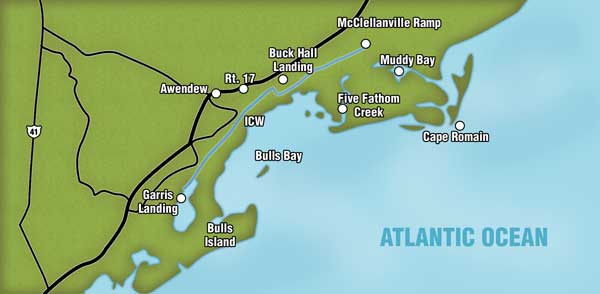
Bulls Bay trout are suckers for imitation shrimp fished under popping corks.
Hunger is a great motivator. The thought of going through the winter with an empty stomach is enough to make even the wariest of speckled trout throw down its guard and slash around at just about anything that happens to float or swim past its nose.
That’s what Capt. Tom Siwarski counts on in the fall when he slides his flats boat down the ramp into the ICW near Awendaw and heads for Bulls Bay, expecting to catch a speckled trout or two, or three, or two or three dozen.
“They feed all year, but they’ll start feeding a lot harder in the fall,” said Siwarski, a former wildlife biologist who runs Carolina Aero Marine Adventures (843-327-3434). “The main thing that kicks it in is when the water temperature starts to drop. They know that winter’s coming, and they know they’ve got to start feeding hard.
“I find them in the same places I do the rest of the year; they just feed harder. That’s why so everybody does so much better in the fall. The trout know when it starts to cool off that the bait will be leaving by mid-November; the finger mullet, menhaden and shrimp — they’ll be gone soon, so they’ve got to get ’em right away.”
And that can make for three months of tremendous trout fishing. The Bulls Bay/Cape Romain area has some of the best habitat on the South Carolina coastline for all manner of inshore gamefish species, and except for an occasional flats boat and the armada of boats baiting shrimp, you might have the place to yourself.
“The fishing is good everywhere around Charleston and the harbor, but I think it’s a little better up here,” said Siwarski, who trailers his boat from his home in Goose Creek to Bulls Bay a handful of times every week to meet his guide parties. “The main thing is, this place gets a lot less pressure. And you can go to the Cape Romain (National Wildlife) Refuge, and the scenery is so nice — you’re not looking at container ships or all kinds of wrecks while you’re fishing.”
How good is the fishing? Last fall, Siwarski battled 20-knot winds one morning before finding a protected area. The first creek mouth he happened on — draining a grass flat on a falling tide — he and another fishermen knocked off 25 or 30 specks in an hour without moving the boat more than 100 yards.
That’s no surprise to Bill Roumillat, a fisheries biologist with the S.C. Department of Natural Resources’ Marine Division.
“We sample all the way from Winyah Bay to the ACE basin, and the biggest reason we’ve come up with about the Cape Romain area, which includes Bulls Bay, is that it’s a really good place to catch red drum, spotted sea trout and southern flounder, because it gets minimal fishing pressure,” he said.
“The Cape Romain area is classified as an estuary, but it has minimal freshwater influx. It’s pretty much a shallow area with a salinity level that matches the ocean. In fact, sometimes during the summer, the salinity level is probably higher than the ocean.
“When we sample, our catch-per-unit-effort (CPU) is actually a little better in Cape Romain than it is in Charleston Harbor. This is conjecture, but in Charleston Harbor, the freshwater influx allows a lot more diversity in the fishery because of its changing salinity. The fish that spotted sea trout feed on — anchovies, menhaden and silversides — there may not be as large a population at Cape Romain, so you’ve got less competition (as an angler).
“Plus, the habitat there, all of those oysters, it looks perfect for everything.”
Siwarski said fishing usually starts to pick up in mid-September, and it can last into December, depending on the onset of cold weather and its severity. The weather can start the bite a couple of weeks early or late, and end it the same way.
Creek mouths are one of Siwarski’s two main objectives in the fall. Oyster bars in odd shapes and locations are his other target. Both will hold trout on different stages of the tide cycle, and fishing can be great on both kinds of places.
“I’m fishing the same old stuff, oyster beds near grass and creek mouths,” Siwarski said. “The only thing is, I’m fishing oysters that are a little bit different — not just spread out up and down a bank. Either they’re a little bit farther off the bank than normal, or they run perpendicular, away from the bank.
“You can catch fish here just working the oyster beds along the edge of the grass — they’re everywhere — but finding something different is the key. My best spots are where the oysters are a ways off the bank or jutting out, like an oyster point.
“I like to fish the points and clumps of oysters when the tide is rising. I like to catch ’em in the creek mouths when the water is falling out. Creek mouths are better spots on an outgoing tide; the falling water concentrates ’em. You can catch ’em on both tides around creek mouths, but it’s so much better when it’s falling.
“I look for little ditches and little creeks draining the marsh. Those are places where the bait will go in and out, and the trout just sit there and wait for them — like a buffet.”
When Siwarski and his guest hammered the trout last October at one creek mouth, they caught a few fish around the mouth of the creek as the tide approached high, then moved back into the creek as it crested, catching more fish, before dropping back out. With the tide falling, they were catching specks as far as 50 yards out in the open water off the creek mouth.
“I like to get out a couple of hours before and a couple of hours after the high tide — maybe two or three hours on either side,” he said. “I like to fish falling water coming out of the creeks, and I’ll try to fish the other spots — the oysters and points — on a rising tide.”
Siwarski will fish a big topwater plug like a Zara Spook or MirrOLure Top Pup if he happens to catch a rising or high tide around daylight. He likes baits in mullet colors — silver/black, white/red head and bone — but thinks colors are overrated when it comes to topwater baits. “If they’re gonna hit a topwater, they’re gonna hit it, no matter what color it is,” he said.
The rest of the time, you’ll rarely catch Siwarski fishing anything but a DOA Shrimp under a popping cork; it’s his bread-and-butter. When he settles down to fish an area, he’ll sling the popping-cork rig toward his target, allow the water to settle down after the initial splash, then begin a retrieve that’s a series of sharp, short jerks, each one moving the cork a foot or so. While popping corks are deadly when you’re floating live shrimp under them, they can produce almost as many fish with a plastic imitation shrimp — without the bother of having to find bait and keep it alive.
Siwarski fishes his popping-cork rigs on a 7-foot, medium-action Shimano Claris rod and a Shimano 2500 series spinning reel loaded with 10-pound Power Pro braid. He likes to run between 30 and 36 inches of 15-pound fluorocarbon leader between the cork and the DOA Shrimp. He sticks with two main colors: “glow” when the water is stained and clear in clear water.
“One thing you want to do is always cast upcurrent and retrieve downcurrent,” he said. “You want that shrimp floating with the current and not against it.”
Bulls Bay and Cape Romain make up a huge area of backwaters, open waters, creeks and marsh. It can be a good hour’s boat ride from one end to the other, and Siwarski said he covers it all, at one time or the other — often pushed one place or the other by the wind.
“A strong wind can be tough because it’s so shallow that everything can get so muddy,” he said. “A west wind doesn’t mess it up, but an east or a northeast will. A northeast will blow in all that dirty water from the ocean.”
So finding areas with the clearest water possible is a typical daily chore for Siwarski. An oyster bank that’s great on Tuesday may be terrible on Wednesday if the wind shifts overnight.
“I’ve had real good days fishing windy banks; I figure it blows the bait up against it and you catch ’em there, just like the bass fishermen do,” Siwarski said. “But I like to fish when you don’t have much wind, or when you’ve had the same light wind for about three days.
“I’ll fish all over the place, from Bulls Bay all the way up to Cape Romain. Five Fathom Creek is probably the middle of my fishing grounds. I’ll fish on the other side of Five Fathom Creek and into Cape Romain, and I’ll fish all the way back through Bulls Bay itself.”

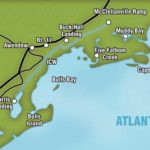
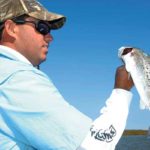
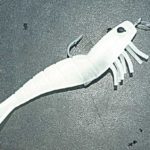
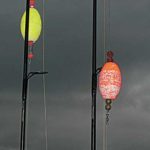
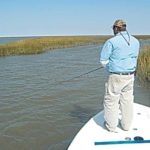
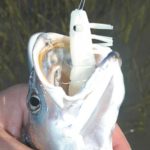



Be the first to comment